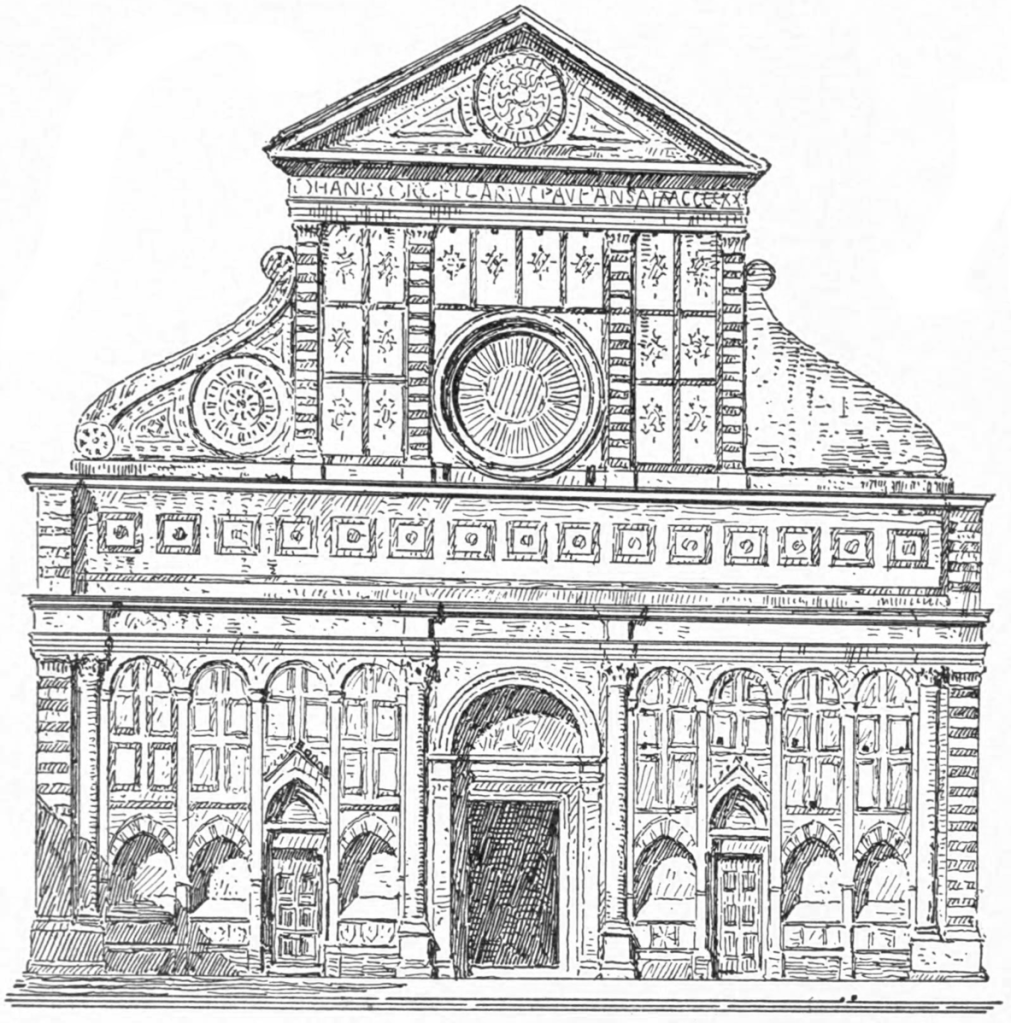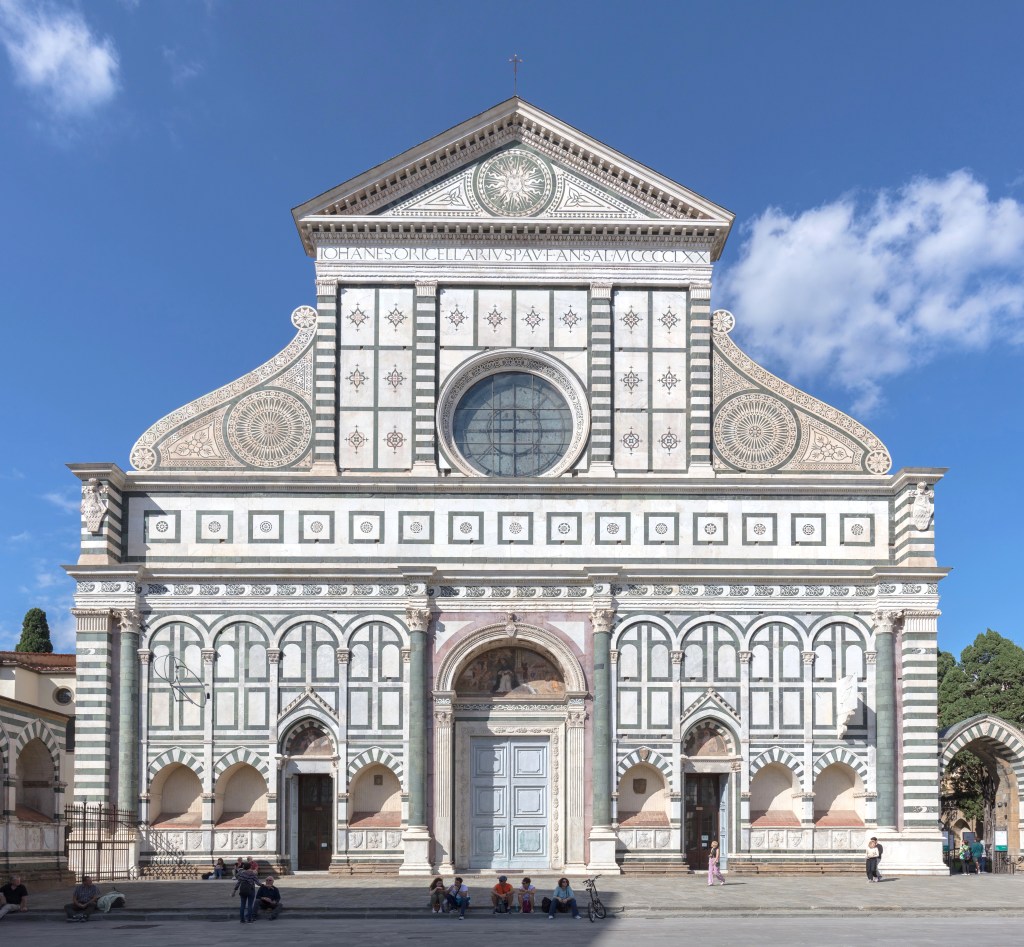

Santa Maria Novella, one of the most sublime churches in Tuscany, needs no general introduction. The Wiki article SMV gives a very good overview. The focus of this article is on the amazing meridian dial inside the church itself.
First, I should mention the 2 famous dials on the facade, the subject of much interest, investigation, and analysis including detailed articles by BSS. I plan to feature both separately in due course. On the left is an armillary sphere; on the right is an astronomical quadrant. They are the work of Egnatzio Danti, astronomer to Cosimo I, and were installed c1570.
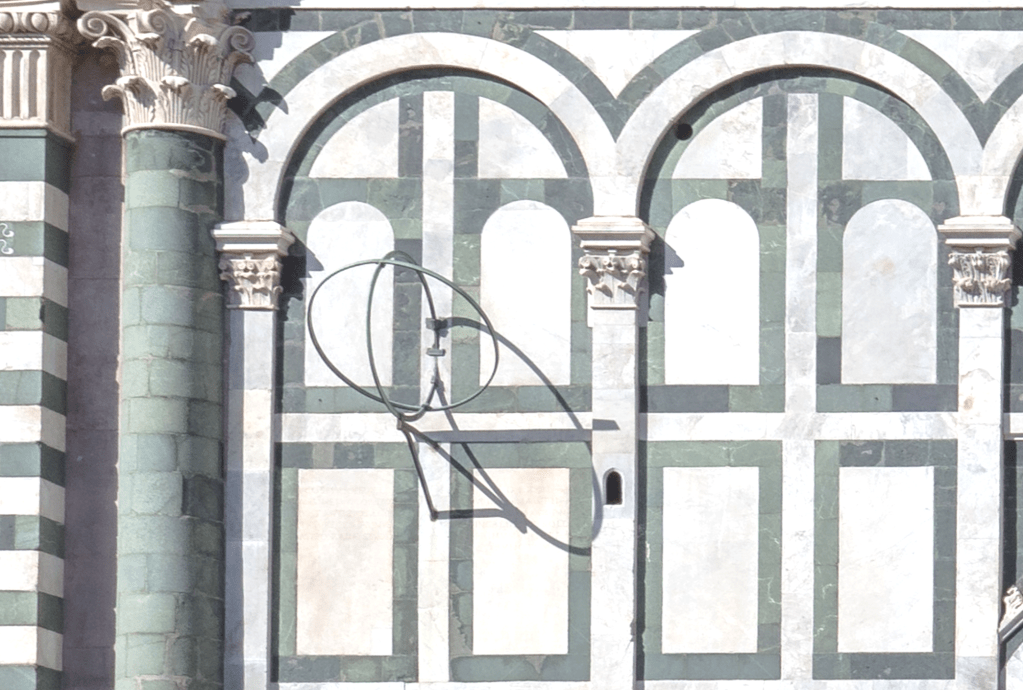
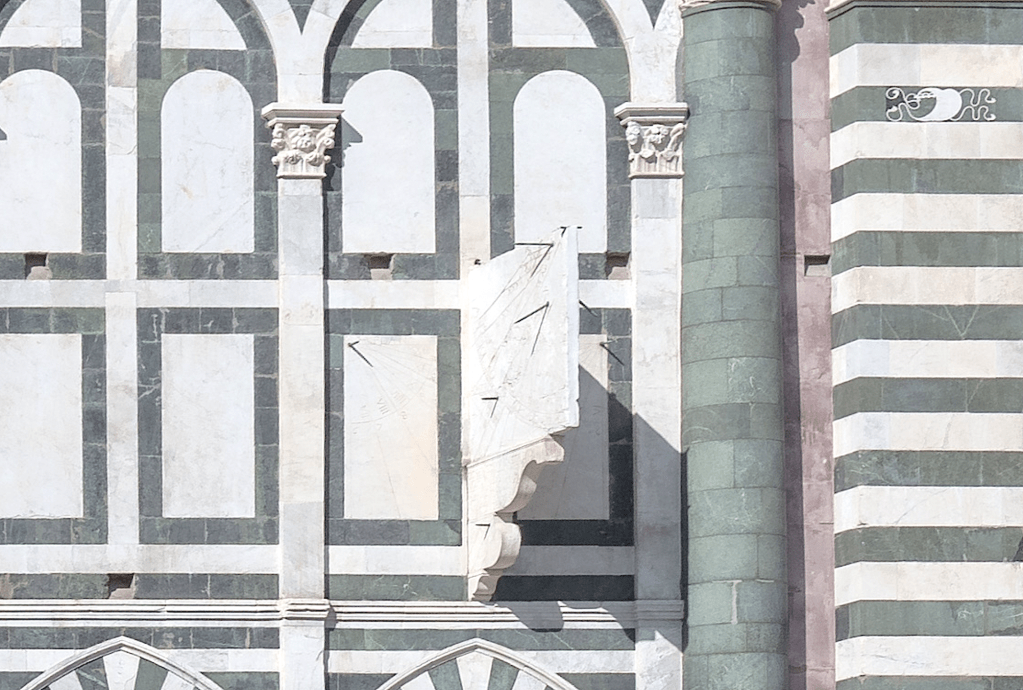

The Museo Galileo has a comprehensive website here MG and is a superb resource for historical science. Exhibits include 2 of Galileo’s telescopes. In 2007 it held a remarkable dial-based exhibition called The Line of the Sun. The entry for SMN includes all 3 dials and gives a succinct account of their creation and significance. I am adapting / adopting some entries from the museum’s explanations.

MERIDIAN DIAL
Background: Between 1572 and 1575, the cosmographer Egnazio Danti (1536-1586) installed on the façade of Santa Maria Novella no less than three astronomical instruments: a great quadrant with sundials; an equinoctial armillary; and two ‘camera obscura gnomons’. These instruments were designed to be used for new astronomical calculations linked to the project for reforming the Julian calendar…
Meridian Dial: Although Danti designed the dials he was unable to complete the tracing of the meridian line on the floor of the church. He only opened gnomonic holes, first in the glass of the rose window, then on the church’s façade, much higher, and made two openings in the vaulting as well, through which rays of light would pass only during the equinoxes and the winter solstice.
Operation: The entrance of the sunbeam was through the two gnomonic holes. The pinhole on the rose-window would have allowed [the measurement of] time during the entire year. The pinhole on the façade would have allowed the same reading only in the days of the equinoxes and of the winter solstice (IMSS Multimedia Laboratory).


FACADE POSITIONS
Gnomon holes on the facade in the rose window (70′ high) and just below the pediment


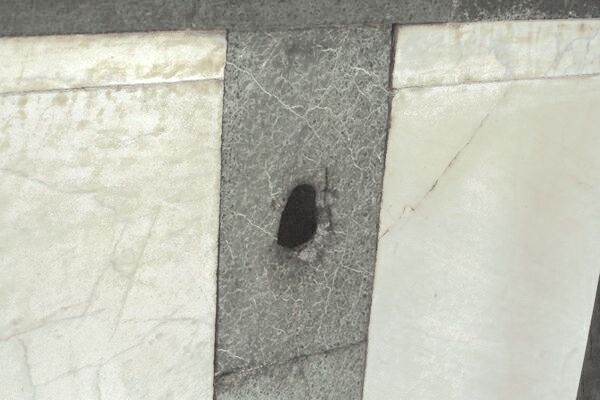

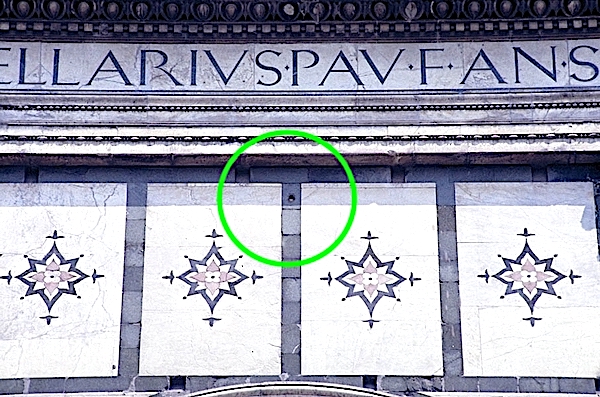

MERIDIAN DIAL IN DETAIL






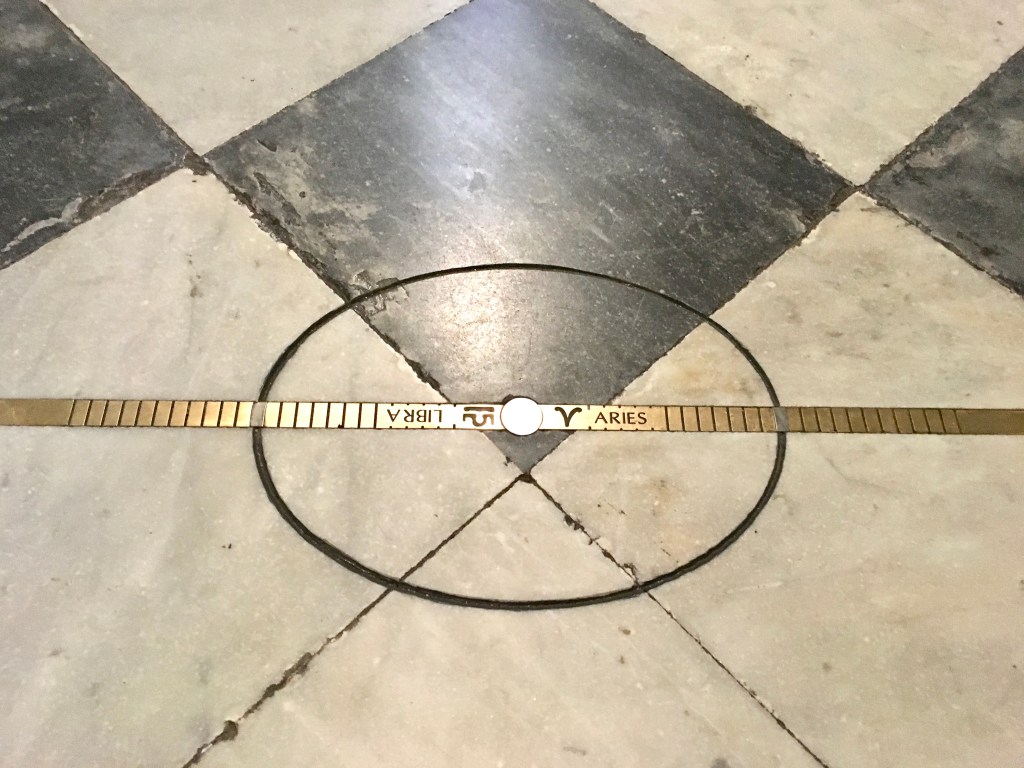



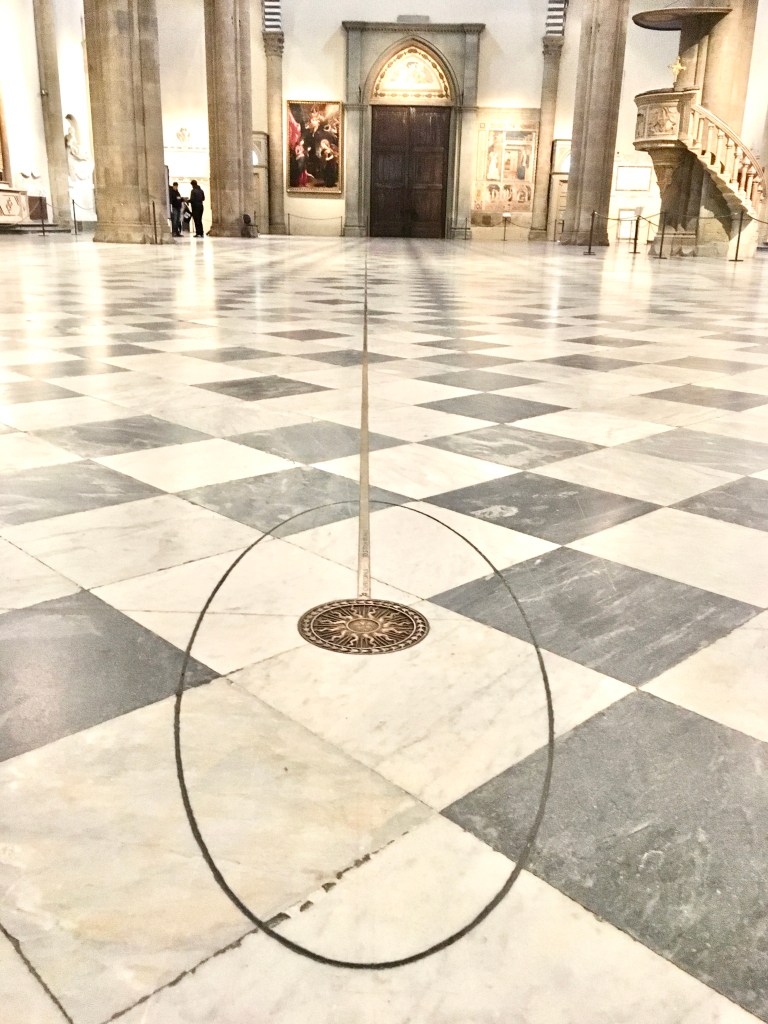

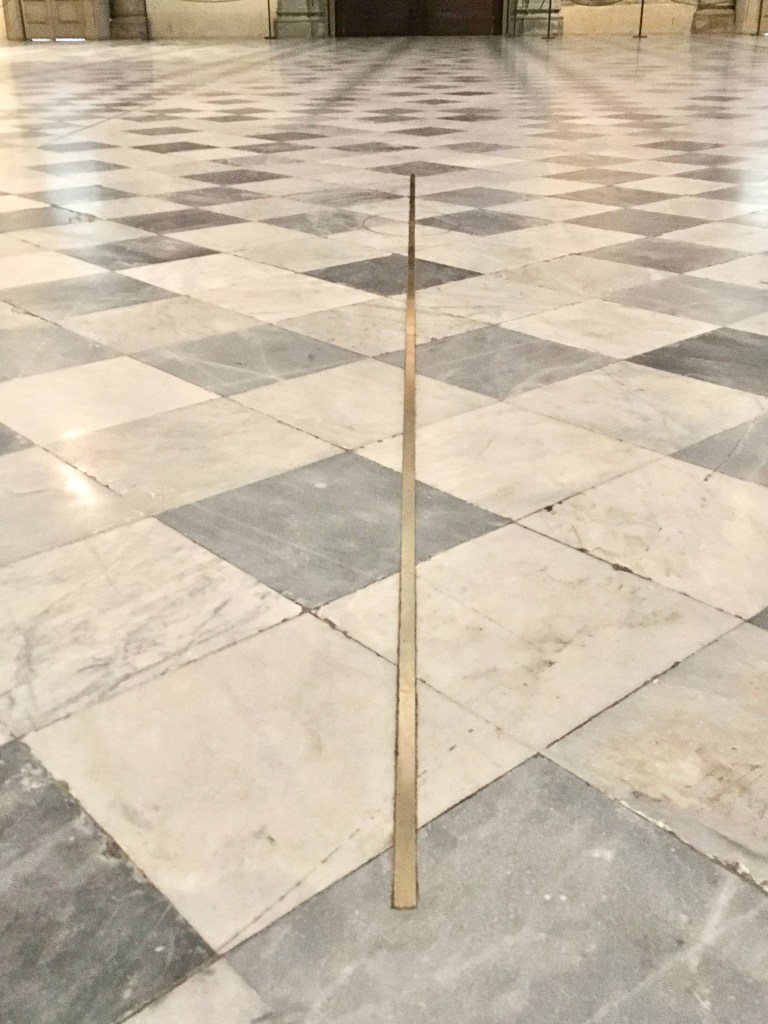





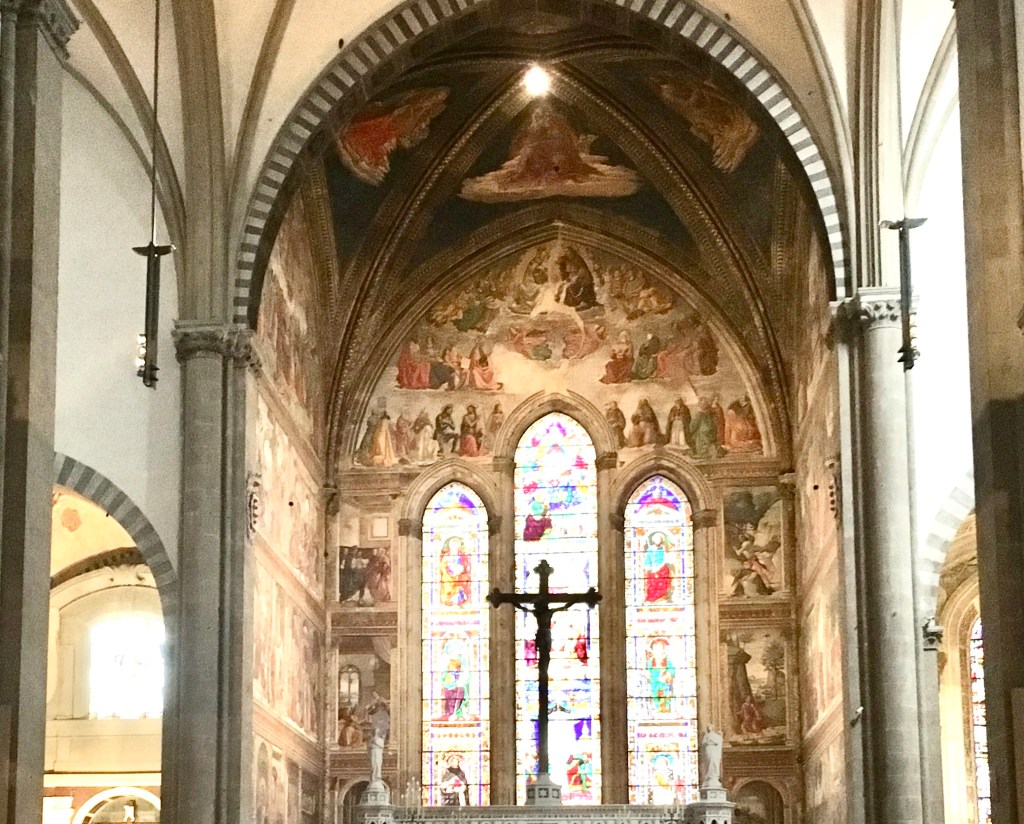

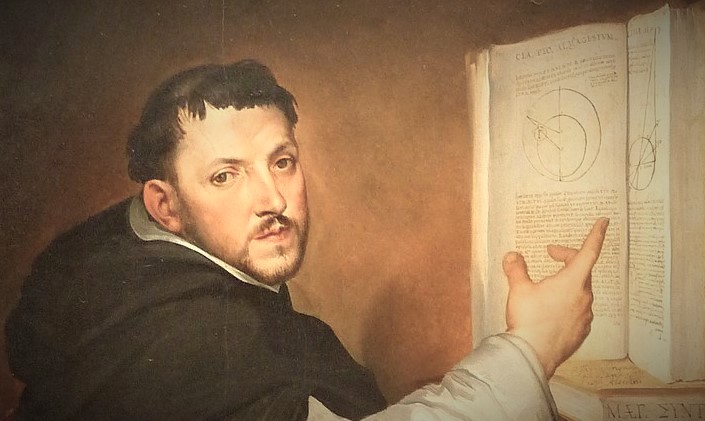
REFERENCES / CREDITS



Wiki cc – header image / close-up
‘photo tsettle’ – gnomon hole positions
All dial photos – Keith Salvesen
